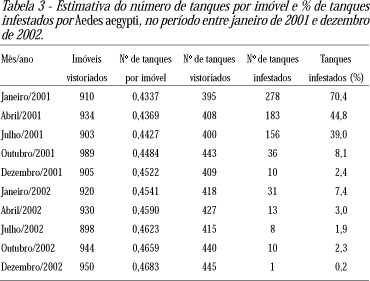Canindé has a population of 71,235 inhabitants. In April 2001, the city started using larvivorous fish in cement water tanks, as a means of biological control of Aedes aegypti larvae. During house-to-house visits by health agents, instead of treating the water tank with larvicide, a Betta splendens fish was introduced into each tank. The number of houses and the number of tanks was estimated by monthly surveys. Then, the number of tanks per house was determined. Taking into account this estimated number and the number of houses visited, the infestation level for each kind of deposit was analyzed. In January 2001, 70.4% of the water tanks presented mosquitoes. Following the intervention, in January 2002 only 7.4% were positive and by December 2002 the rate had dropped to 0.2%. The efficacy of Betta splendens as a biological control agent in cement water tanks was clearly demonstrated, by achieving a 320 times reduction in the infestation level.
Dengue; Aedes aegypti; Biological control; Larvivorous fish; Betta splendens





